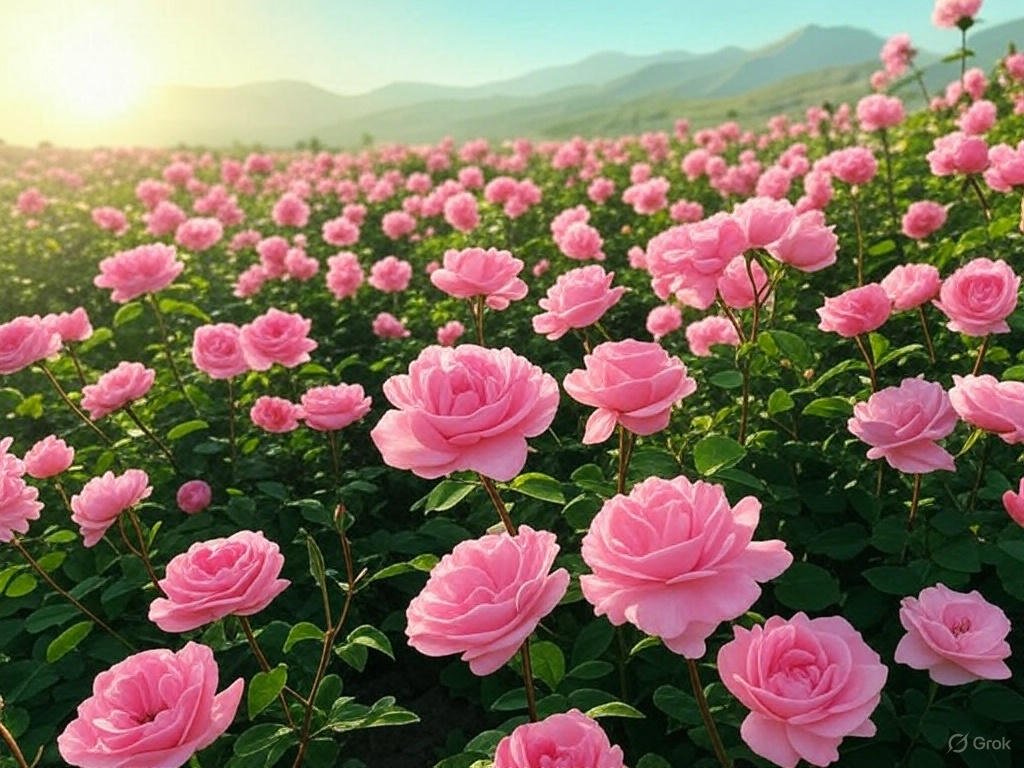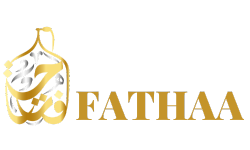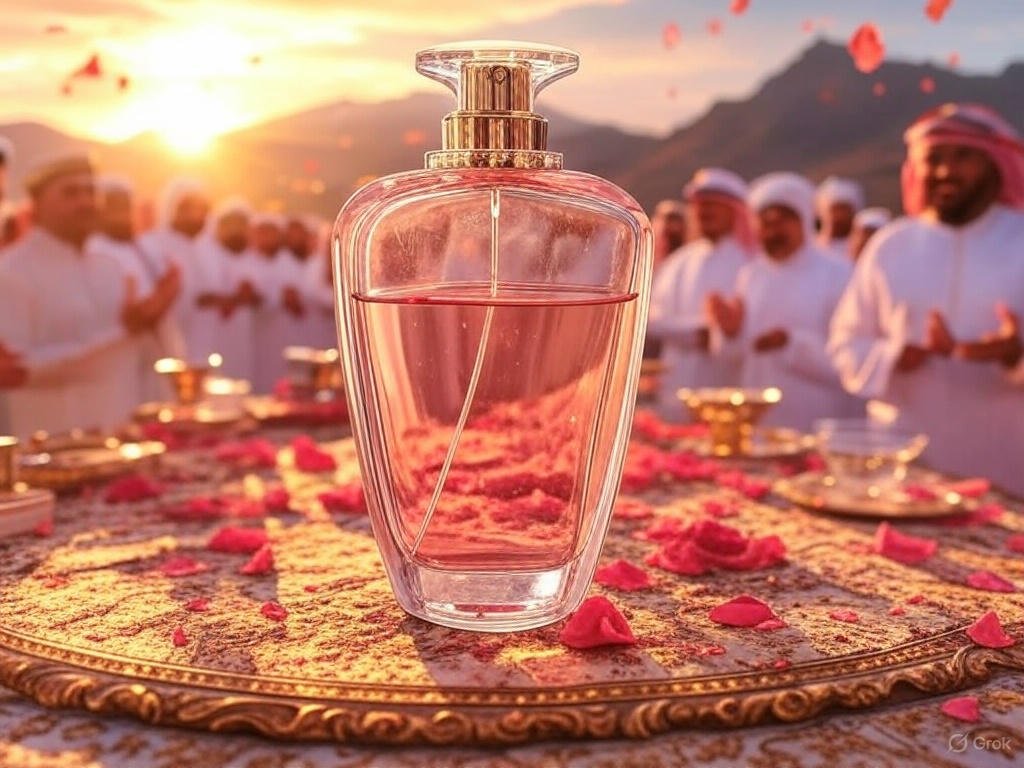Perfumery Ingredients
Taif Rose
Taif Rose
Taif Rose and its Significance on Middle Eastern Perfumery
Key Points
– Research suggests Taif Rose, grown in Taif, Saudi Arabia, is significant in Arabic culture, used in Islamic rituals like washing the Kaaba and featured in the Taif Rose Festival in April.
– It seems likely that it’s a key ingredient in Middle Eastern perfumery, with brands like Ormande Jayne using it, costing up to $800 for small vials due to labor-intensive production.
– The evidence leans toward its historical roots possibly linked to Ottoman Turks, with 40,000 roses needed for 11g of attar, making it rare and luxurious.
– An unexpected detail is its use in wedding gifts and as a Hajj souvenir, symbolizing love and honor in Arabic traditions.
Introduction to Taif Rose
Taif Rose, also known as Wardh Taifi, is a Damask Rose variety from Taif, Saudi Arabia, near Mecca, known for its soft, powdery scent with tea and honey notes. It’s not just a flower but a cultural icon in Arabic traditions and a star in Middle Eastern perfumery, perfect for perfume lovers exploring Arabic rose perfumes at Fathaa.com.
Cultural Significance in Arabic Traditions
Taif Rose holds deep roots in Arabic and Islamic culture, often called the “flower of Heaven.” It’s used in sacred rituals, like the ceremonial washing of the Kaaba in Mecca with high-quality rose oil, and during Hajj, where the Kiswah (the cloth covering the Kaaba) is sprinkled with rose water. Historically, in 1453, Sultan Mehmet II washed Aya Sophia with rose water, showing its broader Islamic heritage.
Culturally, it’s a gesture of honor, with a dab on the wrist for guests or as a wedding gift, symbolizing love and rarity, as it takes 40,000 roses to produce 11g of attar, costing around $400. The annual Taif Rose Festival, held in April at Al Rudaf Park, organized by the Ministry of Culture, features live performances, music, and perfume-making workshops, setting a Guinness World Record in its second edition for the biggest basket of roses (84,450 assorted roses). Pilgrims often buy Taif Rose oil as a Hajj souvenir, connecting to its heritage.
Role in Middle Eastern Perfumery
In Middle Eastern perfumery, Taif Rose is a luxury ingredient, known for its warm, floral notes with spicy and honeyed undertones, ideal for Arabic rose perfumes. Brands like Ormande Jayne’s Ta’if Eau de Parfum, launched in 2005, feature it, becoming a bestseller at Harrods, paired with saffron, dates, and jasmine. Its quick absorption on skin makes it perfect for authentic attars, with vials sold for up to $800 in Dubai.
Production is labor-intensive: harvested in April, early morning hours preserve essential oils, using traditional two-step distillation with copper boilers, overseen by families like al Qadi and al Kamal in Taif’s valleys like Huda and al Shafa.
Survey Note: Comprehensive Analysis of Taif Rose and Its Significance
This section provides a detailed exploration of Taif Rose, covering its cultural importance, role in Middle Eastern perfumery, botanical and historical context, and relevance for perfume enthusiasts, ensuring a thorough understanding for readers interested in Arabic culture and luxury fragrances.
Introduction to Taif Rose and Article Context
Taif Rose, scientifically Rosa damascena trigintipetala, is a Damask Rose variety cultivated in the Taif region of Saudi Arabia, near Mecca, known for its soft, powdery scent with hints of tea and honey. The article, written for the blog section of www.fathaa.com, explores its significance in Arabic culture and Middle Eastern perfumery, aiming to attract perfume lovers. It’s structured with sections on cultural significance, perfumery use, and historical context, ensuring SEO optimization with keywords like “Taif Rose,” “Arabic rose perfume,” and “best Taif Rose fragrances 2025.”
Cultural and Spiritual Significance in Arabic Traditions
Taif Rose holds a deep place in Arabic and Islamic culture, often termed the “flower of Heaven,” symbolizing the human soul and spirituality. Research suggests it’s used in sacred rituals, such as the ceremonial washing of the holy Kaaba in Mecca, using the highest-quality rose oil, a practice tied to Islamic pilgrimage. During Hajj, the Kiswah is sprinkled with rose water, and historically, in 1453, Sultan Mehmet II washed Aya Sophia with rose water before converting it to a mosque, illustrating its broader Islamic heritage ([Czech & Speake – Rose of Taif Guide](https://www.czechandspeake.com/fragrance/journal-posts/rose-of-taif-a-guide-to-the-mysterious-flower/)).
The 11th-century Persian physician Ibn Sina emphasized its therapeutic effects, stating, “Because of its exquisite fragrance, the rose addresses the soul,” noting benefits for heart and brain health. Culturally, it’s a gesture of honor, with a dab on the wrist for guests or as a wedding gift, reflecting its rarity, as it takes 40,000 roses to produce 11g of attar, costing around $400. Rose water is used in Ramadan for fast-breaking meals and ‘Id al-Fitr desserts, and as a flavoring in tea and traditional cosmetics like kohl, with rose-water sprinklers symbolizing hospitality at wedding feasts across the Muslim world.
The annual Taif Rose Festival, organized by the Ministry of Culture at Al Rudaf Park in April, features live performances, music, and perfume-making workshops, setting a Guinness World Record in its second edition for the biggest basket of roses (84,450 assorted roses, taking 168 hours and involving 190 young contributors) ([Visit Saudi Official Website – Taif Roses](https://www.visitsaudi.com/en/see-do/destinations/taif/taif-roses-a-historic-scent)). This festival, along with the rose village, showcases dances, plays, and exhibitions, carpeted in flowers, celebrating Taif’s heritage. Pilgrims often buy Taif Rose oil as a Hajj souvenir, taking the route through Taif, reinforcing its cultural significance.
Role in Middle Eastern Perfumery
In Middle Eastern perfumery, Taif Rose is a luxury ingredient, known for its warm, rich, deeply floral notes with spicy and honey-like undertones, matching or exceeding rival products. Its scent profile, faintly tea-like and powdery, makes it versatile for unisex and female perfumes, featured in brands like Ormande Jayne’s Ta’if Eau de Parfum, launched in 2005 and becoming a bestseller, listed among Harrods’ top 10 ([How the Taif Rose of Saudi Arabia Enchants Perfumers and Fragrance Lovers the World Over](https://en.vogue.me/beauty/taif-rose-saudi-arabia-perfumes-fragrances/)). It’s often paired with saffron, dates, pink pepper, orange flower, and jasmine, creating complex fragrances.
Production involves traditional two-step distillation (cohobation) using 120-liter tin-lined copper boilers, with modern innovations in al-Hada using stainless-steel equipment from Grasse, France. Historically, roses were transported by camel to Makkah for distillation, but local distillation began two centuries ago for efficiency due to volatile oils. Its intensity and quick absorption on the skin make it ideal for authentic attars, with examples in perfumes from 1949 to 2024, including unisex and female fragrances, searchable by notes at [Fragrantica](https://www.fragrantica.com/ingredients-search/).
The high cost, with vials sold for upwards of $800 in Dubai, reflects its rarity and labor, with five Taif families overseeing production. Its nobility and status appeal, rooted in its rose symbolism of romance, love, and beauty, reigning over the flower kingdom for 40 million years, enhance its popularity in Middle Eastern perfumery ([What’s So Special About Taif Rose?](https://appellation.co/blogs/journal/what-s-so-special-about-taif-rose)).
Botanical and Geographical Context
Taif Rose is cultivated in Taif’s suburbs like Huda, al Shafa, al Ghadeerayn, and Wadi Mahram, at 2,000 meters above sea level, with a cooler climate ideal for rose cultivation. Harvesting occurs in April, daily from dawn to 7:00 a.m., to preserve essential oils, with a mature bush (15–20 years old) producing over 3,000 roses seasonally, peaking at 200 roses per bush daily in the third week of April. Its 30 oil-rich petals offer a soft, powdery bouquet with tea-like and honeyed notes, distinguishing it from other roses like the Bulgarian Kazanlik strain, possibly introduced by Ottoman Turks in the 14th century.
Main producers include families like al Qadi, al Kamal, al Qureishi, al Ghuraybi, and al Solhi, overseeing cultivation and laboratories. Spent flower mash is sold as cattle feed, producing rose-flavored milk, and used as fertilizer and mulch, adding economic value.
Historical Context and Modern Relevance
Taif Rose’s cultivation dates back three centuries, possibly introduced by Ottoman Turks from the Balkans, linked to the Bulgarian “kazanlik” strain, first described in the 9th century by al-Kindi, with advanced techniques by al-Razi in the 10th century, and widely produced in Syria by the 13th century. Attar production was refined in the late 16th century with double-distillation, and local distillation in Taif began two centuries ago.
Today, it remains a cultural and perfumery icon, with nearly 1,000 rose farms in Taif, producing about 300 million blooms annually, hand-picked for rarity. At Fathaa.com, while we may not have Taif Rose-specific products, its story inspires our [collections](https://www.fathaa.com/collections/perfumes), inviting perfume lovers to explore Arabic rose fragrances and Middle Eastern perfumery, connecting to its heritage of luxury and tradition.
Why It Matters for Perfume Lovers
At Fathaa.com, we celebrate Middle Eastern heritage in perfumery. While we may not have Taif Rose-specific products, its story resonates with those seeking unique, culturally rich scents. Explore our [collections](https://www.fathaa.com/collections/perfumes) to discover fragrances inspired by this iconic flower, perfect for anyone diving into Arabic rose perfumes or Middle Eastern perfumery, especially if searching for “buy Taif Rose-inspired perfumes online” or “best Taif Rose fragrances 2025.”
Key Citations
– [Rose of Taif: A Guide to the Mysterious Flower | Czech & Speake](https://www.czechandspeake.com/fragrance/journal-posts/rose-of-taif-a-guide-to-the-mysterious-flower/)
– [What Makes Perfumes So Important in Middle Eastern Traditions?](https://gozonepack.com/the-importance-of-perfumes-in-middle-eastern-traditions-and-ceremonies/)
– [How the Taif Rose of Saudi Arabia Enchants Perfumers and Fragrance Lovers the World Over](https://en.vogue.me/beauty/taif-rose-saudi-arabia-perfumes-fragrances/)
– [What’s So Special About Taif Rose?](https://appellation.co/blogs/journal/what-s-so-special-about-taif-rose)
– [Taif Season perfumery showcases its signature smell | Arab News](https://www.arabnews.com/node/1548026/saudi-arabia)
– [Taif Rose perfume ingredient, Taif Rose fragrance and essential oils Rosa damascena trigintipetala](https://www.fragrantica.com/notes/Taif-Rose-115.html)
– [Traditional Scent – Visit Saudi Official Website](https://www.visitsaudi.com/en/see-do/destinations/taif/taif-roses-a-historic-scent)
– [On the perfume trail – Gulf Times](https://www.gulf-times.com/story/351204/on-the-perfume-trail)
– [Rose De Taif (Extrait) – Osme Perfumery](https://www.osmeperfumery.com/products/rose-de-taif-extrait)



